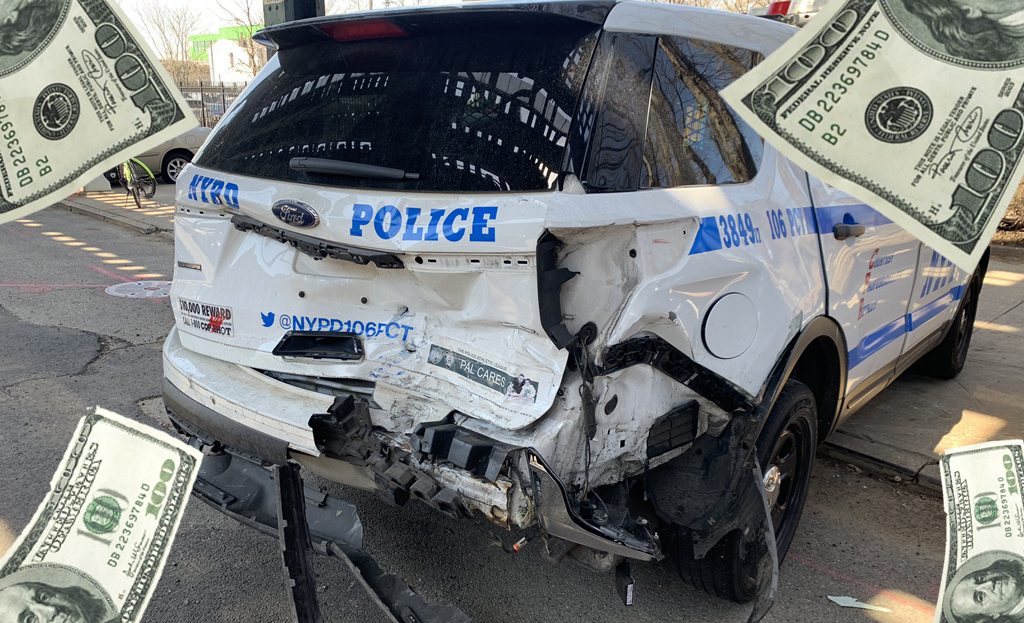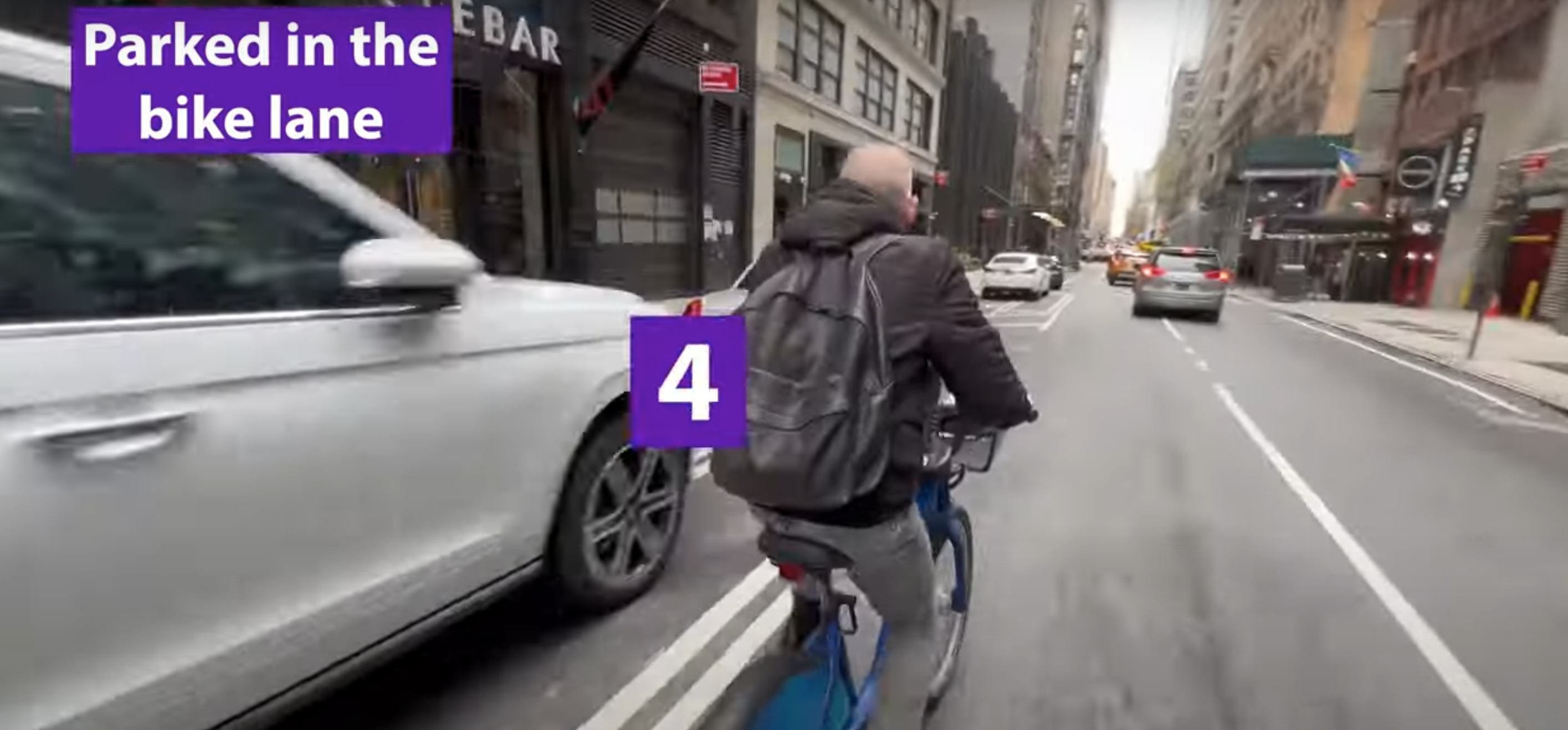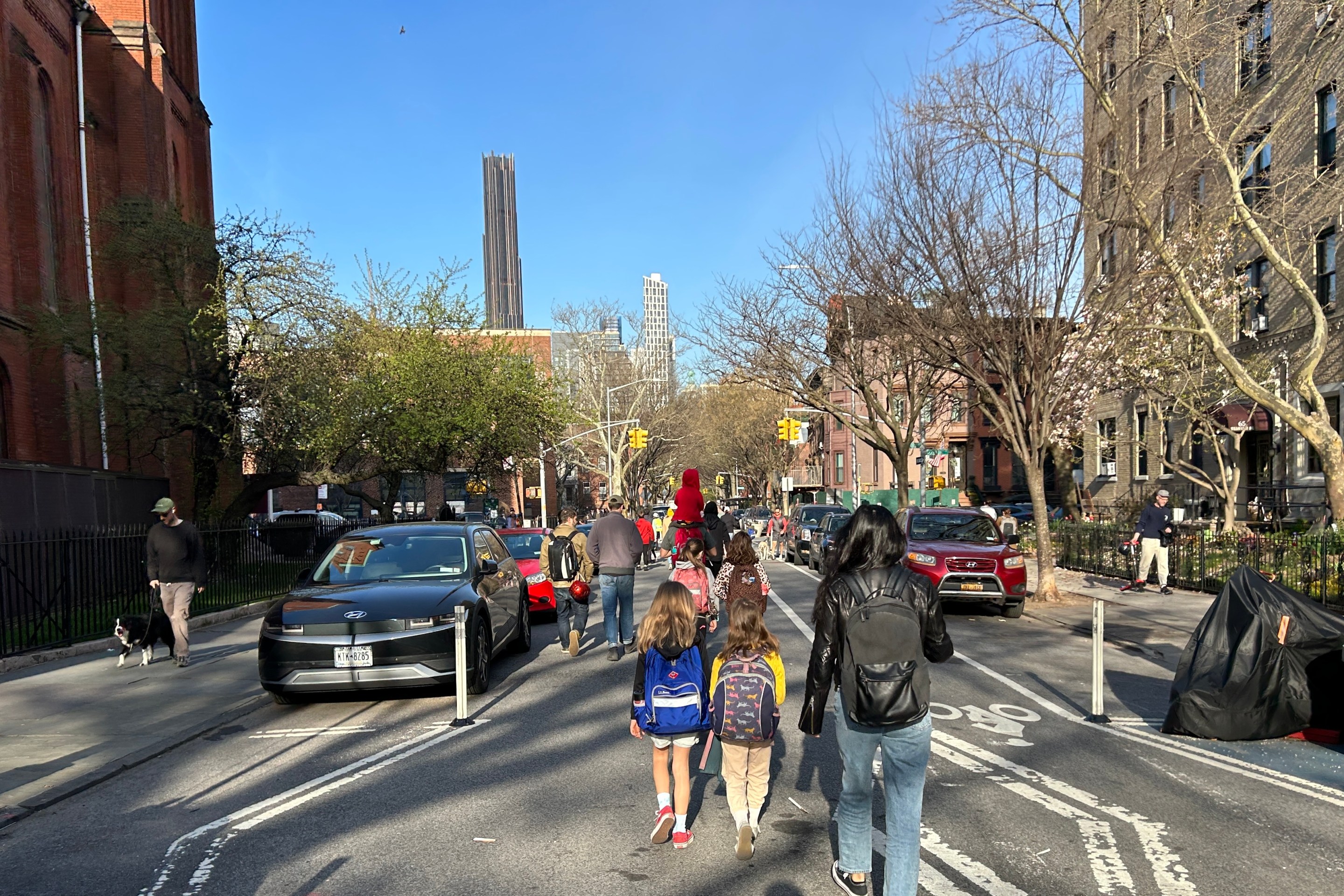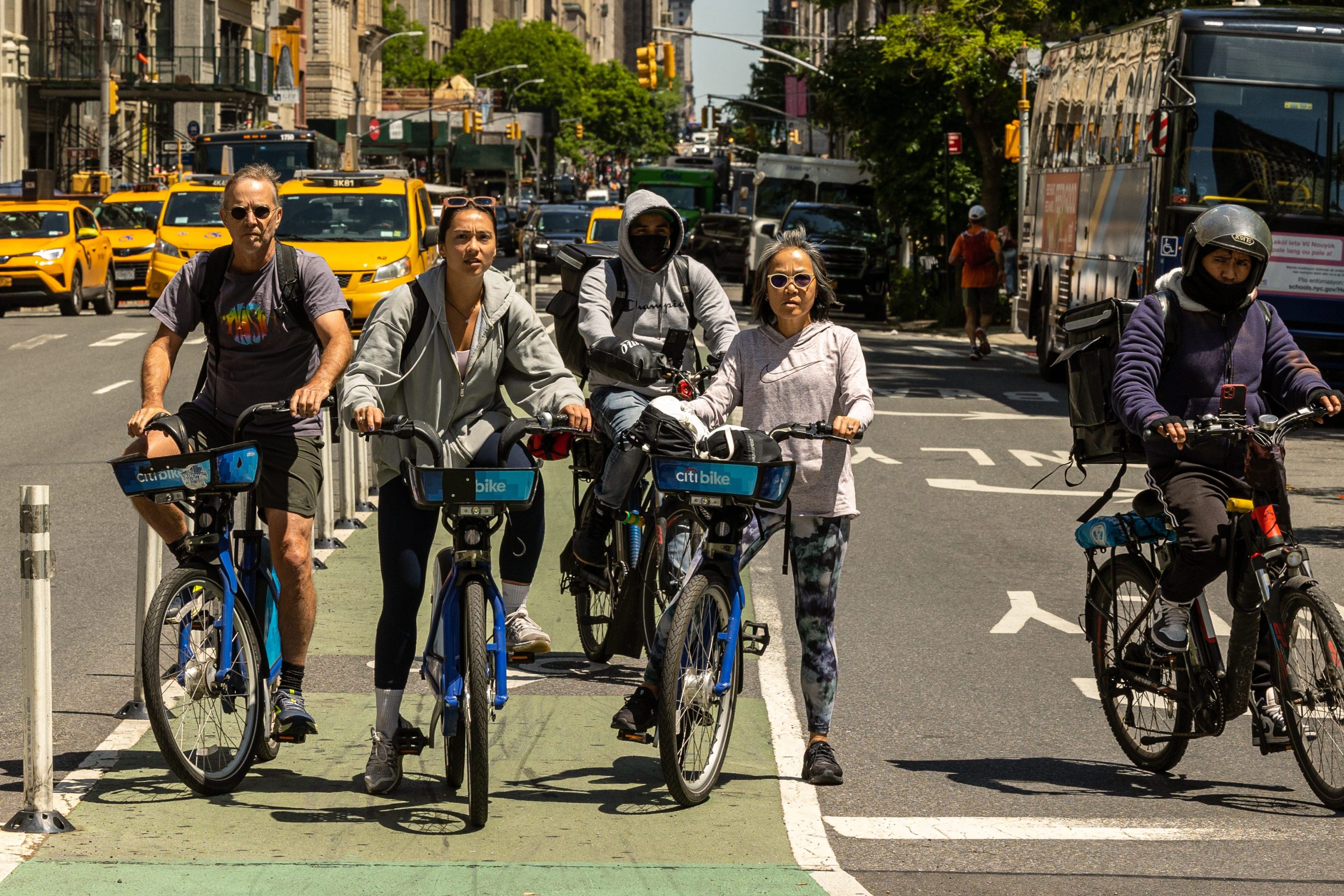The Simple Change to Truck Design That Can Save Lives
11:30 AM EST on December 18, 2014
![Truck side guards can help reduce pedestrian and cyclist fatalities. Boston requires them on city-contracted vehicles. New York might follow Boston's lead. Image: Boston Cyclists Union [PDF]](https://lede-admin.nyc.streetsblog.org/wp-content/uploads/sites/48/2014/12/Screen-Shot-2014-12-17-at-5.08.18-PM.png?w=710)
When someone is struck by a turning truck driver in New York City, the worst injuries are typically caused when the vehicle's back wheels run over the victim. Amar Diarrassouba, Ngozi Agbim, Noshat Nahian, Jessica Dworkin, and Renee Thompson were among the New Yorkers run over by the rear wheels of large trucks in recent years.
Large trucks designed for highways, with their huge wheels, sweeping turns, and enormous blind spots, are inherently dangerous on crowded city streets, and in the long run the freight system should be designed to eliminate them in populated areas. But in the meantime, improvements to vehicle design can reduce the risks to pedestrians and cyclists. Lives can be saved by installing a side rail or panel between a truck's wheels that keeps pedestrians and cyclists, if they are struck, from being crushed as the vehicle keeps moving forward.
The de Blasio administration is expected to release a report soon about how this safety feature can be rolled out in New York, but inaction from Albany and Washington threatens to dwarf any city action by keeping large numbers of dangerous trucks legally operating on city streets.
Research from nations that do require side guards shows clear safety benefits. After the United Kingdom began requiring side guards on most new trucks in 1986, there was a 61 percent drop in cyclist fatalities and a 20 percent drop in pedestrian deaths in the types of crashes side guards are designed to mitigate. Researchers at Transport for London say strengthening the UK's side guard requirements could save the lives of at least two additional pedestrians and cyclists each year in that city alone [PDF]. Side guards have been required on trucks across the European Union since 1989, and are also standard equipment in Japan. They have not yet been mandated in Australia or Canada, which abruptly halted its own study of side guards last year.
Here in the United States, the National Transportation Safety Board last year recommended installing side guards on large trucks, but the National Highway Traffic Safety Administration, which regulates truck design, hasn't yet passed a rule requiring them. NHTSA says it could propose new trailer guard rules, though not necessarily for side guards, by the middle of next year.
In the absence of a federal rule, cities can take immediate steps by installing side guards on municipally-owned trucks. Boston has taken the lead among American cities and New York might soon follow.
A side guard law was enacted in Boston after cyclist deaths, most recently in April, led to action. In response, the city launched a pilot that tested three types of side guards on 16 city vehicles. In July, after the pilot launched, a bike-share cyclist was injured, but not killed, by a turning garbage truck driver whose vehicle was equipped with side guards.
Spurred by the positive results and advocacy from the Boston Cyclists Union [PDF], Mayor Marty Walsh proposed expanding the pilot into a full-fledged side guard ordinance. The law, passed in October, requires side guards on all city-contracted vehicles over 10,000 pounds, or a combined weight of 26,000 pounds for tractor trailers. It also requires additional blind spot mirrors and blind spot awareness decals on the vehicles. A similar ordinance is being considered in adjacent Cambridge [PDF]. With this first-of-its kind law now on the books, the Boston Cyclists Union is encouraging the city to launch a comprehensive evaluation of its new side guard requirement to address a lack of American research on the issue.
Here in New York, the city's Vision Zero Action Plan calls for side guards to be installed on city fleet vehicles. While that hasn't happened yet, the administration is moving toward achieving that goal.
In October, the city hosted a Vision Zero "Fleets Safety Forum" featuring public and private fleet operators. One of the presenters at the forum was Dr. Alex Epstein, an engineer with U.S. DOT's Volpe National Transportation Systems Center who worked with Boston on its side guard law and is now providing technical assistance to New York as it formulates its own policy.
“It may seem simple at first glance, but there are quite a few engineering decisions to make," Epstein said. He has been working with the Department of Citywide Administrative Services to develop technical standards for side guards on different types of vehicles in the city fleet. For example, side guards must be low enough to keep the victim from getting swept beneath the vehicle but high enough to avoid scraping bumps in the road. Epstein also noted that Brazil, for example, has more durable side guards due to the high number of motorcyclists on that nation's roads, while lighter-weight European designs are more focused on cyclists and pedestrians.
“With New York, my role has been of a technical nature," Epstein said, "going a bit deeper into some of this effectiveness data, some of the evidence, and some of the technical specifications.”
The de Blasio administration is poised to take that work and release an in-depth report on side guards charting a course of action. At a City Council hearing in April, DOT Commissioner Polly Trottenberg said the study would be published by the end of July. Last month, DCAS said the report, which will address both city-owned and private fleets, "is in the midst of being finalized."
In the meantime, the Department of Sanitation is already testing side guards on a handful of its garbage trucks. "We've been concerned that it might impede snow operations, but so far we feel like they're going to work well," DSNY Commissioner Kathryn Garcia said at a City Council hearing in October. "We want to see them get through a winter season."
With its large fleet of trucks in constant operation on city streets, DSNY ranks second among city agencies for pedestrian personal injury claims. There were four claims related to pedestrian deaths filed against DSNY from 2007 to 2014, according to Comptroller Scott Stringer. Garcia expressed hope that side guards could reduce the severity of pedestrian crashes. With guards on the trucks, she said, "they can't get pulled under our back wheels, so they might get hurt -- but they shouldn't be killed."
Installing side guards on the city's own trucks is one thing. The next installment in this series will examine the prospects for requiring them on privately-owned trucks.
An earlier version of this story stated that a Boston bike-share cyclist was killed by a turning truck driver, leading the City of Boston to pursue a side guard pilot. The pilot had already been launched by the time of this crash in July and included the vehicle that struck the cyclist, who was injured, not killed. After the July crash, the city pursued a broader-reaching side guard law.
Stay in touch
Sign up for our free newsletter
More from Streetsblog New York City
Car Crashes by City Workers Cost Taxpayers $180M in Payouts Last Year: Report
A record number of victims of crashes involving city employees in city-owned cars filed claims in fiscal year 2023 — and settlements with victims have jumped 23 percent, a new report shows.
Tuesday’s Headlines: Biking with a Dutchman Edition
You really get a fresh perspective on city cycling when you do it with someone from Holland. Plus other news.
City Urges Judge to Toss Anti-Open Streets Lawsuit
The city's not responsible for 24-7 car access to every street, officials argued.
Opinion: Connect the Dots of Manhattan’s Missing Bike Lanes
Only a few miles of missing protected lanes stand in the way of a robust bike network.
Monday’s Headlines: Thanking the Academy Edition
We would be remiss if we didn't offer some photos and copy about Friday's George Polk Awards ceremony, plus other news.




